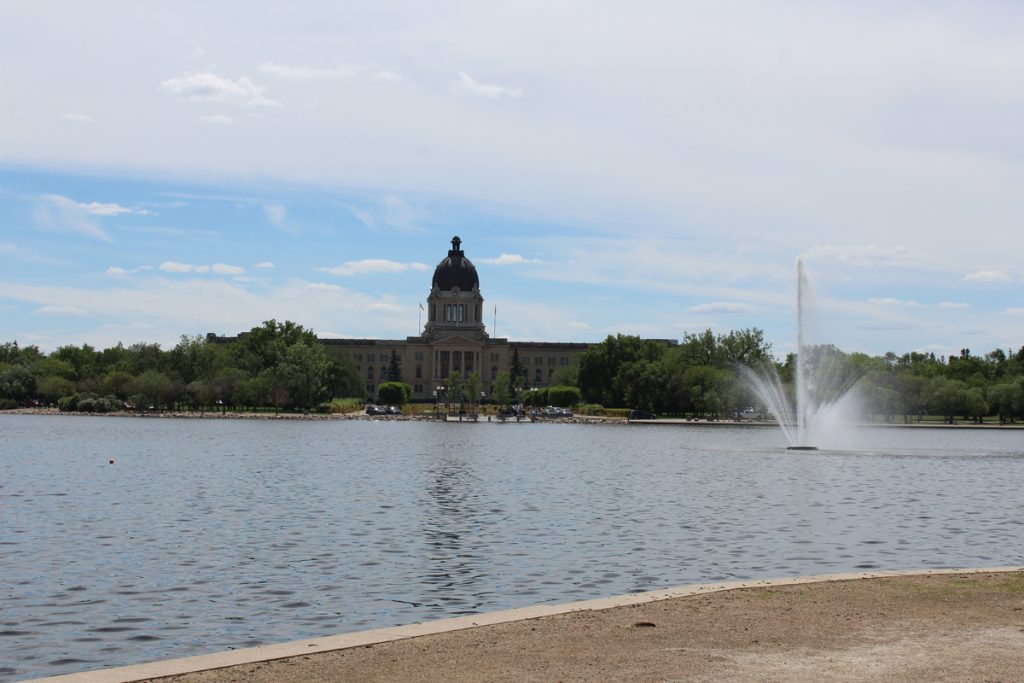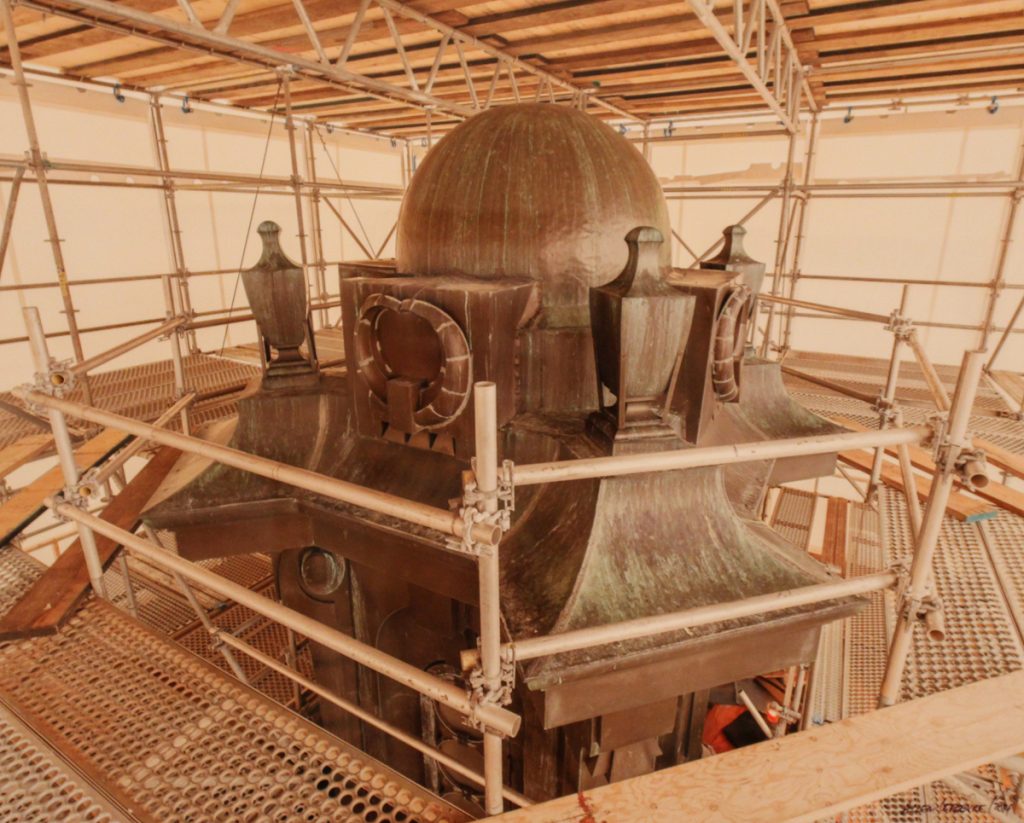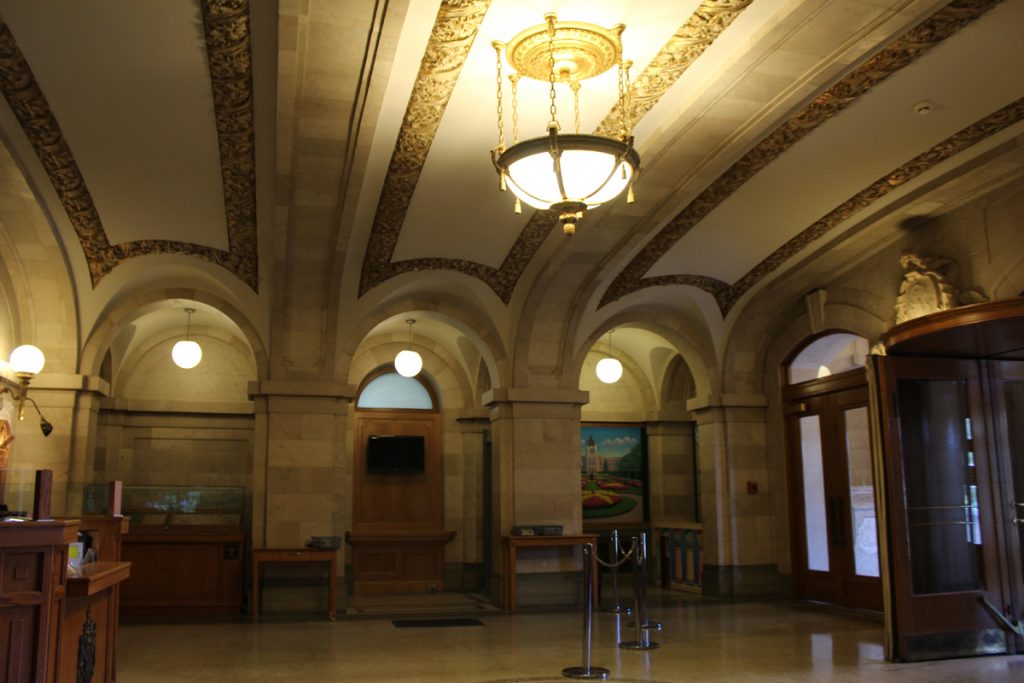When our son accepted a transfer to Regina to help open a new store we were flummoxed. Sure it was a good career move, but why would anyone want to live in Regina? Nevertheless, I joined him to share the driving a few months ago as we embarked on the two day and a half journey from Vancouver.
His company put him up in a hotel until he could find permanent digs. We quickly discovered one of the benefits of Regina. Within a week he had sold his one bedroom and den apartment in suburban Vancouver and bought a two bedroom townhouse with finished basement and detached garage in Regina. The price differential was enough for him to knock $15,000 off his mortgage, pay off his car, buy new furniture and still have money left over.

Regina is a small town compared to Greater Vancouver with a population of 236,481 for the metropolitan area. Our son’s house is in a development in the farthest western area of the city, just a 25 minute drive to his work in the farthest eastern part of the city.
While the downtown is usually considered the heart of most cities, that is not the case in Regina.
My wife and I drove out to visit in June. We spent one afternoon while our son was working checking out the real heart of Regina – the magnificent Wascana Centre and the neighbouring legislature building. Regina is the capital of the province and the legislature is its most impressive building, the vision of the first premier of Saskatchewan, Walter Scott (not the author!)

The city had already served as the capital of the Northwest Territories before Saskatchewan became a province in 1905. The lieutenant-governor of the territory rejected other more favorable locations for a piece of scrub land actually known as Pile-of-Bones (Wascana in Cree) “distinguished only by collections of bison bones near a small spring run-off creek”. The LG, a fellow named Dewdney, had bought property there adjacent to where the planned CP Railway line was to go. The obvious graft caused a scandal, but there was no legislature. Dewdney was a virtual dictator and could do what he liked.
But despite its barrenness – nothing but flat prairie as far a the eye can see, visionary planners dammed Wascana Creek with a weir (it’s adjacent to the current Albert Street Bridge) resulting in the formation of Wascana Lake.

The first premier of the new province, Walter Scott, had a vision of a legislature building on the shore of Wascana Lake, then a wilderness a few kilometers from the downtown area. A design competition was launched and the winning design by Montreal architects, the Maxwell Brothers, was chosen.

Construction began in 1908 and was completed in 1912 at a cost of $1.75 million. That’s about $800 million today. It remains the largest of the provincial legislatures in Canada.

My wife and I took a walk around the shore of the lake across the bridge to the other side and back before touring the legislature itself. Tours are free. Immediately upon entering the building one is impressed by the richness of the entrance.

Our guide took us up the steps to the rotunda which features marble from around the world. The rotunda also features two murals high above. And it features the busts of three Saskatchewan political icons – each from a different political party.
 |
 |
 |
From there we were given a look into the legislative chamber. Scott and his fellow politicians had a much bolder vision for Saskatchewan than eventually transpired and the legislature was built to accommodate 125 members. In fact, the population has not grown as expected and the number of representatives currently stands at 58.

From the floor of the legislature we went down a flight of stairs to the legislature’s library. There was someone using it at the time so I couldn’t take a picture, but I did get a photo of an historic Canadian artifact housed there – the conference table used at the Quebec Conference in 1864 when the Fathers of Confederation were negotiating Canada’s independence.

Whether this is the actual Confederation Table is speculative. What is known is that it was used by the Privy Council in Ottawa in 1865 after being moved with other furnishings from Quebec. And it was the right size to have been the original table.
Lieutenant-Governor Dewdney brought the table to Regina sometime between 1883 and 1892. The sixteen foot table wouldn’t fit in the room assigned for it and six feet were lopped off in the middle. That part of the table was discarded. Eventually the shortened table was brought to the legislature library where it now resides.

Continuing our tour we visited two galleries. Saskatchewan has had a long history of cordial relations with indigenous peoples and in 1909, the government commissioned noted portrait painter Edmund Morris to do portraits of fifteen native chiefs. Those pictures hang in the Assiniboine Gallery.

Morris was the son of Alexander Morris, the Lieutenant Governor of Manitoba who was responsible for negotiating many treaties with indigenous peoples. He had previously been commissioned by the Government of Ontario to do portraits of the Ojibway in the north of that province. He also did similar work for the Government of Alberta. His paintings are considered historically significant records of native history in Canada.

The other gallery featured portraits of the premiers of Saskatchewan.

We ended our tour at another gallery, the Cumberland Gallery. Displays vary but when we were there it featured some works from the Saskatchewan Arts Board which has been promoting art in Saskatchewan since 1948. They have over 3000 works in their permanent collection.

There were some striking works on display. One of the more intriguing was by Zhong-Yang Huang called Two Dream Walkers by Zhen Fei Well. It was striking because it seemed almost out of place among the more traditional works on display.

There is a story behind the painting, of course. Huang was born in China and showed an aptitude for art from age four. This talent was stifled by the Cultural Revolution which discouraged individual creativity. The fifteen year old Huang was forced to work as a laborer.
After the Cultural Revolution, Huang continued his studies, earning a Masters Degree in art. In 1984 he traveled to Canada and earned a second Masters at the University of Regina.

Two Dream Walkers by Zhen Fei Well was part of a solo exhibition in 2011 called The Shadow of Mao. It shows Chairman Mao having a smoke while Liu Shaoqui, Chairman of State and the second most powerful man in China at the time, looks down the Zhen Fei Well.
During the Qing Dynasty, the Dowager Empress had Zhen Fei, one of her husband’s concubines, thrown down the well. The information sheet beside the painting adds “Mao later had Liu removed from office and executed. A seemingly peaceful night scene taking on a more ominous tone within the historical context.”

Let’s return briefly to Wescana Centre. The hub of the city revolves around Wescana Lake. In 1962, the University of Regina needed to expand. It needed a site for that expansion and decided on an area south-east of the lake. In conjunction with the province and the city, the Wescana Centre Authority was formed to create a multi-use oasis in the centre of the city. The result was a 930 hectare (2300 acre) area surrounding the 120 hectare (300 acre) lake. This green space includes the legislature as well as the university, and also includes two art galleries, a performing arts centre, a science centre, a museum and lots of parkland.

By the late 1990s, however, silt had built up enough in the lake that it started to turn into a swamp. A major project dubbed The Big Dig was undertaken in 2003. A large part of the lake was dredged to a depth of five and a half metres, a depth at which weeds cannot root. One area was dredged to seven and a half metres so that northern pike and perch could survive Regina’s cold winter. Boardwalks and other amenities were added.
Today Wescana Centre is the rejuvenated heart of the city. An oasis in a flat prairie of wheat fields.
You’ll find more pictures on the following photo gallery.
